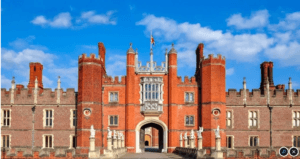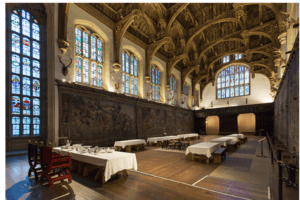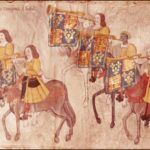Profile
John Blanke
The Historian
-
The historian championing this figure
I am Dr Suki Haider, I teach history at university. These are my dogs (from the left: Savvy, Phoenix and Zak). <img class="alignnone size-medium wp-image-1775" src="/wp-content/uploads/2021/10/sukis-photo-2-300x295.jpg" alt="" width="300" height="295" />
-
What was the time period like?:
This was a hard time for people to live, if they were not rich. Poor people worked on the land and there was very limited medical knowledge and sanitation and housing was very basic.
The Tudor period is famous for Henry VIII and his six wives, the plays of William Shakespeare and the exploration of America.

William Shakespeare


Hampton Court, Henry VIII’s favourite palace
Tudors lived in a feudal system. This means that the monarch had absolute power (total power) and owned all the land in the country. Nobles would swear loyalty to the monarch who would then grant them lands. The nobles would then allow peasants to work the land in exchange for food and shelter.
If you were born a peasant, you would live your whole life in poverty. Having to work for the noble on whose land you worked. Children would have the same life as their parents, there was not a social ladder for the poor to climb.
In the Tudor period, it was a man’s job to provide for his family while women were responsible for raising children and taking care of the household. Women had very few rights and were under the control of their fathers or husbands.
The ruler was expected to be a king. When Henry VIII had no surviving male heir (son) this was a cause of serious concern. His daughter, Elizabeth I became queen as there was no suitable male in the family, and all her life she had to fight prejudice because she was female.
Turning to the life of Black people, they were living in Europe since Roman times. It had been thought that the Black people in Tudor England were African slaves. However, now that historians have studied the records they understand that Black people were paid wages and some, like John Blanke had important jobs. We know that Black people married native women and had families that lived and worked with the native population. But only the rich left written records. We know about John Blanke because he is shown in a painting of a royal celebration.
-
What influence have they had on Modern Day UK?:
John Blanke is proof that Black men were living and working in England in the Tudor period.
The Tudor period of English history is well known, but it is only recently that historians have discussed the existence of Black Tudors. Usually the history focuses on the famous kings like Henry VIII and his daughter Queen Elizabeth I. As a result of learning about John Blanke historians now have a more accurate picture of what the Tudor period was like.
Historians also understand more about the relations between different parts of the world. As Black people were living in Europe in the 1500s we know that there was frequent travel by boat between Africa and Europe.
The fact that John Blanke was paid the same wage as his fellow trumpeters tells us he was a respected musician. Black and white trumpeters were not treated differently by the royal court, they were equally important.
-
Born: The exact date is unknown. Guessing from when he was working, it was about 1470
-
Died: This is not know either, as he vanishes from the records. He may have died as early as 1512 or as late as 1540
-
Time period:
We know he was in London 1501-1511, working as a trumpeter at the Tudor royal court. John Blanke was not an enslaved man and this has surprised many historians.
By 1502 the trans-atlantic slave trade had begun, in which England played a key role. Africans were kidnapped from their homeland and sold to be used as slaves in the Caribbean and South America to work for no wages. Enslaved Africans had no rights, they were not free and they could not return home to Africa.
-
Short Bio: He was employed to play the trumpet for King Henry 7th and King Henry 8th. He played at public events, where the kings would be present. He was one of a group of trumpeters, shown in a painting playing the trumpet and riding a horse at the same time. He is the most famous black man in Tudor England.
-
Extra resources:
You can find more about the Tudor kings and queens: https://planbee.com/blogs/news/tudor-facts-for-children-and-teachers
To learn more about life for ordinary people, who lived in Tudor villages: https://www.curriculumvisions.com/search/V/villageTudor/villageTudor.html


